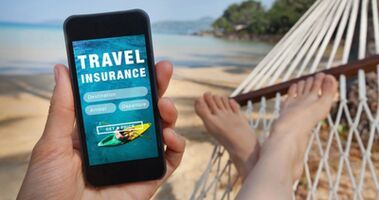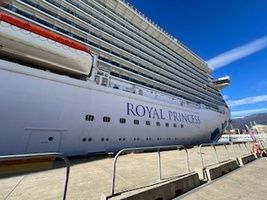
Travelling opens a world of excitement and discovery, allowing you to experience new cultures, explore stunning landscapes, and indulge in the pleasures of different cuisines and nightlife.
However, while travel brings joy and adventure, it also exposes travellers to certain risks. One of the most concerning and often overlooked risks is drink spiking—a dangerous act where someone secretly adds drugs or alcohol to another person’s drink, often with malicious intent.
Drink spiking can occur in a variety of settings: from busy nightclubs and bars to more relaxed beachside bars and even at private gatherings. It can happen anywhere, but certain travel destinations are more likely to have higher rates of drink spiking due to their nightlife culture or the number of tourists they attract.
For travellers, understanding the risks and learning how to protect themselves is essential to enjoying a safe and carefree trip.
What Is Drink Spiking?
Drink spiking is when a substance—typically alcohol, sedatives, or illicit drugs—are added to a person's drink without their knowledge. The goal is usually to impair the victim's ability to function, leading to a lack of awareness, memory loss, and loss of control. In some cases, drink spiking is done to take advantage of the victim sexually or steal from them, while in other instances, it may be motivated by malice or a desire to cause harm. Whatever the intention, drink spiking is illegal, unethical, and can have serious health consequences.
The Dangers of Drink Spiking
The most immediate danger of drink spiking is that the victim can become incapacitated, either through unconsciousness, memory loss, or extreme confusion. In some cases, the person may suffer from blackouts or memory gaps, unable to recall the events that transpired while under the influence of the drug. Drink spiking is often used as a prelude to more malicious activities, such as assault, robbery, or theft.
Criminals may use these substances to take advantage of a victim who is too disoriented or unconscious to resist or report the crime. In extreme cases, drink spiking can also lead to long-term health consequences or even death if the victim is left untreated or if the spiked substance causes a serious medical emergency. In areas associated with bars and massage parlours, be aware of the misuse of massage oils mixed with numbing agents. 
What are the Signs Your Drink May Have Been Spiked?
Being able to recognise the signs that your drink has been tampered with is essential to preventing harm. Some common symptoms of drink spiking include:
- Feeling unusually drunk or lightheaded, even if you have not consumed much alcohol.
- Nausea, dizziness, or confusion that feels out of the ordinary.
- Memory loss or difficulty recalling what happened while you were drinking.
- Loss of coordination or struggling to stay awake or alert.
- Disorientation or a sudden sense of being out of control.
If you experience any of these symptoms, it is crucial to seek help immediately. You should try to find a safe environment and alert a trusted friend or local authority. This is important and crucial as some poisons may work quicker if you have not eaten prior and can have an immediate effect.
What to Do If You Suspect Your Drink Has Been Spiked
If you suspect your drink has been spiked, here are the steps you should take immediately:
- Alert a trusted friend or the people you are with. Let them know what you are experiencing.
- Seek medical attention. If you are feeling ill or disoriented, it is important to get checked out. Call emergency services or head to a nearby hospital.
- Report the incident. Notify the venue's staff or security so they can take appropriate action. In some places, local authorities can help you file a report.
- Know the emergency number of the country you are visiting.
- Know your travel insurance details and emergency numbers. Be also aware some travel insurance policies have strict terms regarding drinks. If an emergency were to occur, you may even find yourself out of pocket with no emergency help.
- If you are travelling on your own, let friends and family know where you are, particularly in a foreign country. Do not take this lightly, many Travellers fail to advise families and friends, when individuals are in danger often it causes distress to families trying to contact the individual.
If you have been assaulted, please seek immediate medical assistance. It is important, as distressing as it is, that you should not shower if you have been assaulted; doing this will assist police and medical professionals in the ability to detect drugs and any DNA they require to assist in investigations of the perpetrator.
Why Are Spiked Drinks Hard to Detect?
The substances used in drink spiking are often colourless, odourless, and tasteless, which makes them difficult to identify through normal sensory checks. Here are the main reasons why spiked drinks are so hard to detect:
- Colourless Many drugs commonly used for spiking, like Rohypnol, GHB, and Ketamine, are colourless. This means they do not change the appearance of the drink, even when mixed in. A victim may not notice anything unusual about the colour or texture of the drink, making it easy for the perpetrator to add the substance without being detected.
- Odourless Many of the substances used in drink spiking have no smell. This lack of odour makes it impossible to detect a spiked drink through a quick sniff. Some drinks, like cocktails or sugary mixed drinks, can also mask any subtle smells from the spiking substances, further obscuring the detection process.
- Tasteless The most dangerous aspect of drink spiking is that many substances—such as GHB, Rohypnol, and Ketamine—are tasteless when dissolved in liquid. This means that the spiked drink may taste completely normal, and the victim may not realize their drink has been tampered with. Even if the victim takes small sips or larger gulps, they will not detect anything unusual.
- Quick-Acting Effects Many substances used to spike drinks work very quickly, often within minutes. These drugs can impair judgment, coordination, and memory before the victim even realizes what is happening. For example, alcohol or sedatives can start to affect a person’s motor skills and mental clarity almost immediately, leaving them confused or disoriented without knowing exactly when the drink was spiked.
- Small Dosage Needed The drugs used in drink spiking are typically effective in small doses. A tiny amount of a substance like Rohypnol or GHB can cause significant effects, which makes it even harder to detect. Since the amount of drug needed is so small, it does not alter the drink’s taste, texture, or appearance enough for the victim to notice.
Common Substances Used in Drink Spiking
There are several types of substances commonly used in drink spiking, many of which are difficult to detect. Here is a breakdown of the most frequently used drugs and their effects:
- Alcohol Sometimes, drink spiking simply involves adding more alcohol to someone's drink. This increases intoxication, leading to impaired judgment, coordination, and memory loss. This is particularly common in party or club settings where a person is already drinking and may not notice the increase in alcohol content.
- Sedatives and Tranquilizers Drugs with sedative properties are often used for drink spiking. These include:
- Rohypnol (Roofies): A powerful sedative that induces memory loss and unconsciousness. It is often associated with sexual assault because of its ability to incapacitate victims. Rohypnol is colourless, odourless, and tasteless, making it exceedingly difficult to detect once mixed into a drink.
- GHB (Gamma-Hydroxybutyrate): Known as "liquid ecstasy," GHB is a central nervous system depressant that causes dizziness, disorientation, and loss of consciousness. Like Rohypnol, it is often used in assault cases because it is hard to detect once mixed in a drink. GHB is available in both liquid and powder form.
- Ketamine: An anaesthetic that causes hallucinations, memory loss, and motor skill impairment. It is colourless, odourless, and tasteless, making it difficult to detect when added to drinks.
- MDMA (Ecstasy) MDMA is a recreational drug that causes feelings of euphoria, emotional warmth, and heightened sensory perception. While typically used at parties or clubs, it can be used to spike drinks, especially when someone wants to take advantage of an individual who is disoriented or heavily intoxicated.
- Benzodiazepines These prescription drugs, such as Valium and Xanax, are used to treat anxiety and insomnia but also have sedative effects. When used recreationally or illicitly, they can impair a person’s judgment, motor skills, and memory. Like other sedatives, they can be slipped into drinks without detection, leaving the victim feeling confused or unable to recall events.
Deadly and fatal poisons can also be used to mimic alcoholic beverages.
What are these cheap drinks made of?
 Methanol (Methyl Alcohol) A toxic alcohol used in solvents, fuel, or antifreeze, sometimes added to cheap alcohol.
Methanol (Methyl Alcohol) A toxic alcohol used in solvents, fuel, or antifreeze, sometimes added to cheap alcohol.- Why it's dangerous: Even small amounts can cause poisoning, dizziness, nausea, blindness, and death.
- Where it can be found: In illegally distilled or poorly regulated alcohol.
- Isopropyl Alcohol (Rubbing Alcohol) A disinfectant and solvent not meant for consumption.
- Why it's dangerous: It can cause headaches, nausea, organ failure, and even death.
- Where it can be found: Occasionally added to cheap alcohol or counterfeit spirits.
- Fusel Alcohols Higher alcohols like propyl alcohol, butanol, and amyl alcohol produced during fermentation.
- Why it's dangerous: In excess, they cause nausea and headaches and are toxic to the body.
- Where it can be found: In poorly made or home-distilled alcohol.
- Contaminants (Lead, Copper) Toxic metals from poorly maintained distillation equipment.
- Why it's dangerous: Lead and copper poisoning can cause organ failure, neurological damage, and death.
- Where it can be found: In homemade or counterfeit alcohol.
- Chlorinated Compounds or Pesticides
- Why it's dangerous: Can lead to nausea, vomiting, poisoning, and organ damage.
- Where it can be found: In unregulated or poorly produced alcohol.
- Ethylene Glycol (Antifreeze) A chemical used in antifreeze to prevent freezing.
- Why it's dangerous: Highly toxic, causing kidney failure, seizures, and death.
- Where it can be found: Used in cheap alcohol to increase alcohol content.
- Excessive Sugar or Additives High levels of sugar or artificial flavours added to cheap alcohol.
- Why it's dangerous: Can cause allergic reactions, digestive issues, and long-term health problems.
- Where it can be found: In sweet, low-cost cocktails or flavoured liquors.
How to Protect Yourself from Drink Spiking
While you cannot eliminate all risks, there are several precautions you can take to reduce the likelihood of drink spiking, especially while travelling. Here are some practical tips:
1. Always Keep Your Drink with You – I cannot emphasise this enough.
This is the most straightforward and effective way to prevent drink spiking. Never leave your drink unattended, EVEN FOR A MOMENT! If you need to go to the restroom or dance, take your drink with you. Alternatively, ask a trusted friend to watch it for you. Not a new friendly stranger.
2. Accept Drinks Only from Trusted Sources
Only accept drinks from bartenders or servers in reputable places. If someone offers you a drink in a social setting, make sure it is from a sealed bottle or prepared in front of you. DO NOT ACCEPT FREE DRINKS or ridiculously reduced drinks; if it is too good to be true, then it probably is. If in doubt, throw it out!
Avoid accepting drinks from strangers or people you do not trust, especially if they have been left unattended for any amount of time. Including street vendors or side alley bars offering samples of drinks, chocolates or food which may be spiked.
3. Use Drink Testing Devices
Consider purchasing drink-testing devices such as drink test strips or drink covers. These products are designed to detect common drugs used in drink spiking, such as roofies (Rohypnol) and GHB (gamma-hydroxybutyrate). Whilst they will not completely guarantee safety, they can provide added peace of mind if you suspect a drink has been spiked.
4. Watch Your Drink Being Made
If you are at a bar or club, watch the bartender prepare your drink or open any bottles or cans. If a bar person turns their back and you cannot see what they are doing, many bars have mirrors facing the drinks bar to watch them. If you have NO VIEW, be aware if there was any reason for them to turn their back. This way, you can be sure nothing has been added to it.
Avoid letting anyone "top off" your drink, as they might have spiked it without your knowledge.
5. Avoid Accepting Drinks from Strangers
While it is important to be friendly and enjoy social interactions while travelling, be cautious when accepting drinks from people you do not know well. If you are unsure about the safety of a drink, it is OKAY TO politely decline any offer, if the offer is forced move yourself away from the individual or situation.
6. Travel with Friends
There’s strength in numbers. When you are out at a bar or club, try to stay with a group of friends or fellow travellers. Always watch out for one another and agree on a plan in case someone feels unwell or experiences unusual symptoms.
7. Trust Your Instincts
If something does not feel right—whether it is your drink, the people around you, or the environment you are in—trust your gut. It is always better to err on the side of caution. If you feel dizzy, confused, or unwell, find a safe place and alert a friend or security personnel.
High-Risk Areas for Drink Spiking
While drink spiking can happen anywhere, there are some areas and situations where the risks are higher, especially in popular tourist destinations. Nightlife hotspots, where alcohol is flowing freely, are often the most dangerous places for drink spiking. Party destinations that attract large crowds of tourists—particularly those who may be unfamiliar with the area or culture—are at increased risk.
Some areas known for having higher rates of drink spiking include:
Popular Party Destinations
Cities such as Bangkok, Barcelona, Rio de Janeiro, and Amsterdam are well-known for their vibrant nightlife, which draws young travellers and backpackers. While these destinations offer an exciting party atmosphere, they also have a higher incidence of drink spiking due to the combination of heavy drinking, large crowds, and the anonymity that comes with being in a bustling bar or nightclub.
Tourist Hotspots
In popular tourist areas, especially those that cater to international visitors, there may be a higher prevalence of opportunistic crimes like drink spiking. Places like Khao San Road in Bangkok, Las Vegas, and Cancun have large numbers of tourists visiting nightclubs, bars, and entertainment venues, creating environments where perpetrators can easily take advantage of people who are unaware of the risks.
Solo Travellers & Remote Locations
Travellers who venture into unfamiliar or less-travelled areas—whether alone or in small groups—are often more vulnerable to drink spiking. If you are travelling solo or at smaller gatherings where you are less familiar with the people around you, it is important to remain extra vigilant.
See the Top 20 Countries for drink spiking below this article.
Stay Safe and Enjoy Your Travels
While drink spiking can happen anywhere in the world, the best way to protect yourself is through vigilance and awareness. By taking some simple precautions, you can significantly reduce your risk of falling victim to drink spiking. As with any safety measure, while travelling, the key is to stay alert and be proactive.
I hear this all the time: I’ll be ok, I’ll be fine, I know what I am doing. However, these things continue to happen with tragic outcomes. Keep these thoughts top of mind throughout your journey:
- Do you know where your drink is right now?
- Do you know who prepared your drink?
- Do family and friends know where you are when you are travelling solo?
- Do you know the emergency number of the country you are in?
Travel is meant to be an enriching experience, and with the right mindset and precautions, you can enjoy your adventures without worry and enjoy our wonderful planet.
|








